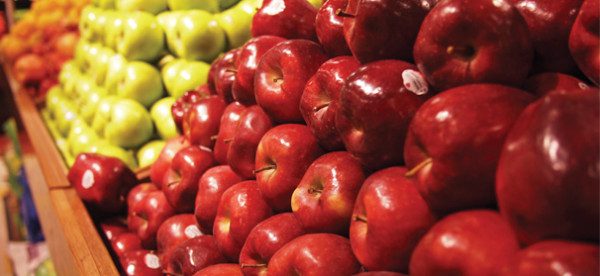

Jan 29, 2015Supermarkets reshape the global apple industry
When talking about “megatrends” in the world apple industry, Peter Beaven started with supermarkets.
Beaven, president of the World Apple and Pear Association, spoke during the Interpoma conference in Bolzano, Italy. With other speakers, he addressed the growth of supermarket chains around the world, their increased purchasing power and how it’s reshaping the global apple industry.
Supermarkets are already the dominant produce buyer in many Western countries, accounting for more than 90 percent of fresh fruit and vegetable sales. They’re starting to dominate in other parts of the world, too, especially Asia. Consumers can’t resist their convenience and suppliers can’t escape their efficiency. It’s unavoidable: Large, well-coordinated supermarket chains require large, well-coordinated apple suppliers.
“They do make our lives difficult,” Beaven said. “They have strong bargaining power. The volume they require has changed us, and because of this there are fewer suppliers who can meet their requirements.”
In Poland, for example, the rise of supermarkets has forced Polish growers to form cooperatives in order to create a more efficient supply. It’s also pushing them to focus more on factors like quality, shape and coloration, said Dominik Wozniak, who spoke on behalf of the Rajpol grower cooperative.
“Everything needs to be right,” he said.
The number of Polish supermarkets has tripled in the last decade, and there have been at least three price wars between the big chains in that time. The effects on the Polish market have been profound. Small family shops are disappearing, replaced by supermarket and discount chains, Wozniak said.
In spite of their growing power, supermarkets need suppliers as much as suppliers need them, Beaven said. And because more and more consumers will be driven to supermarkets in the future, it could lead to major opportunities for apple producers. The grocery chains’ efficient storage and distribution systems make it much easier to introduce new products and to improve the quality of the products already sold.
“We have to see the growth of supermarkets as an opportunity to offer the consumer a better product, rather than as a problem for our businesses,” Beaven said.
U.S. supermarkets
If you’re an apple supplier in the United States and you don’t have at least one of the big supermarket chains as a loyal customer, you’ll end up “picking at the leftovers,” said Steve Lutz, vice president of marketing for Columbia Marketing International, a grower-owned sales and marketing organization in Washington state.
To illustrate the dominance of U.S. supermarkets, Lutz shared some numbers: There are about 33,000 grocery stores in the country; 30 grocery chains represent nearly two-thirds of all U.S. food dollars. And as for apples, supermarkets purchase 77 percent of the entire U.S. supply. Some chains import as much volume as entire countries.
The size of those massive chains is one thing. The “tremendous competitive pressure” they’re under is another, a pressure that trickles down to producers, Lutz said.
“There’s no room to make a mistake anymore,” he said. “You have to be absolutely on your game in delivering exactly what they want with every single load of fruit.”
And yet, somehow – despite the competitive pressure, the ever-larger crops and the fact that domestic per-capita consumption has been in decline for three decades – the U.S. apple industry is succeeding. Consumers might be eating fewer apples, but they’re eating more expensive apples – and retailers have noticed, Lutz said.
The “king” of premium apples is Honeycrisp. It’s not No. 1 in terms of sales (yet), but it is No. 1 in terms of dollars. At supermarkets in 2013, Honeycrisp sold at a 50 percent premium over the category average, which is “almost unheard of.” Retailers are much more interested in Honeycrisp these days – and other newly popular varieties like Gala and Fuji, or proprietary varieties like Pink Lady, Jazz and SweeTango – than in “legacy” varieties like Red Delicious, Golden Delicious and McIntosh, which are falling out of favor with consumers, he said.
Another advantage for suppliers: Supermarkets dedicate a “tremendous amount” of square footage to apples, probably more than any other produce category. This despite the fact that managing the sheer number of apple brands, boxes and varieties being pushed into the marketplace is an extremely complex task for produce managers, Lutz said.
When choosing between Supplier A and Supplier B, however, the produce manager will choose whichever can supply the reddest apple. That’s why having the best genetics – including color-producing characteristics – is so critical these days, he said.
“If you do not have genetic superiority, you will not get business long-term,” Lutz said. “The apple that was perfectly good to eat 10 years ago is unsellable now because it’s not red. That’s the nature of competition now.”














